150-year-old Binghamton business directories offer glimpse of life in the 19th century
I have taken this trip before — a venture through the city directories for the Binghamton area. They provide a wonderful insight into the world as it was. Recent columns have looked back at those directories from 50, 75, and even 100 years ago.
I thought for a fun time, I would pull one of the earlier directories to look at the Binghamton area in the year 1873 — 150 years ago from today’s clamoring society.
Boyd’s Binghamton City and Susquehanna Railroad Directory was compiled by Andrew Boyd and published by H.E. Pratt, a bookseller located at 43 Court St. While it is the Binghamton directory, there is an obvious and heavy influence from Albany, New York given the number of advertisers mentioned throughout the volume. There also seems to have been a concerted effort to get advertisers from Cobleskill, New York as well.
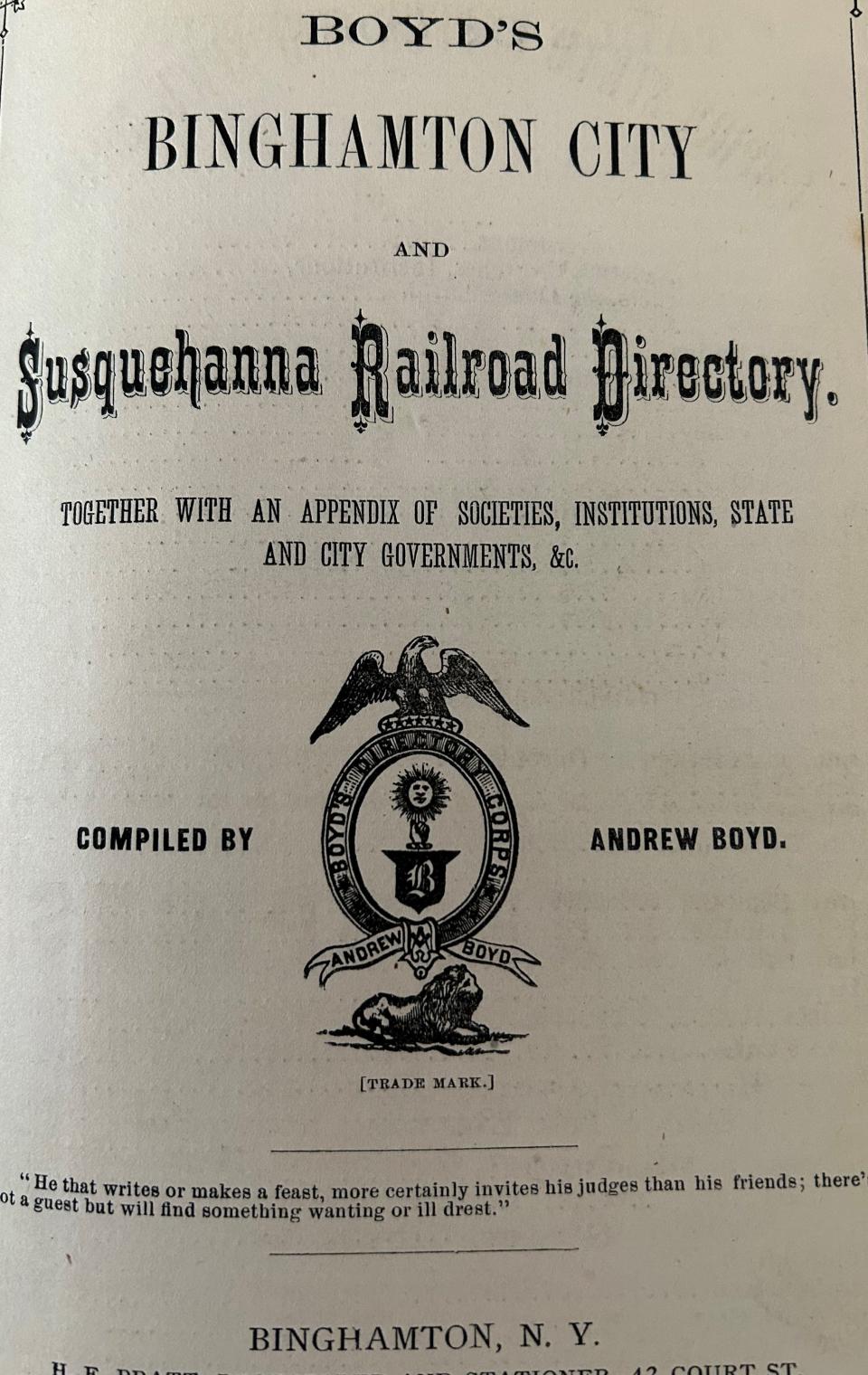
Despite these influences, there emerges a great view of our region in the last quarter of the 19th century. In previous columns, I focused on one type of business that was prominent.
For this column, I thought I would meander through the pages to denote some interesting and revealing items. There is the normal listing of elected and appointed officials at various levels of government. For example, the president of the United States during that year was Ulysses S. Grant, who made $50,000 per year in salary. The vice president was Henry Wilson, who only made $8,000 per year.
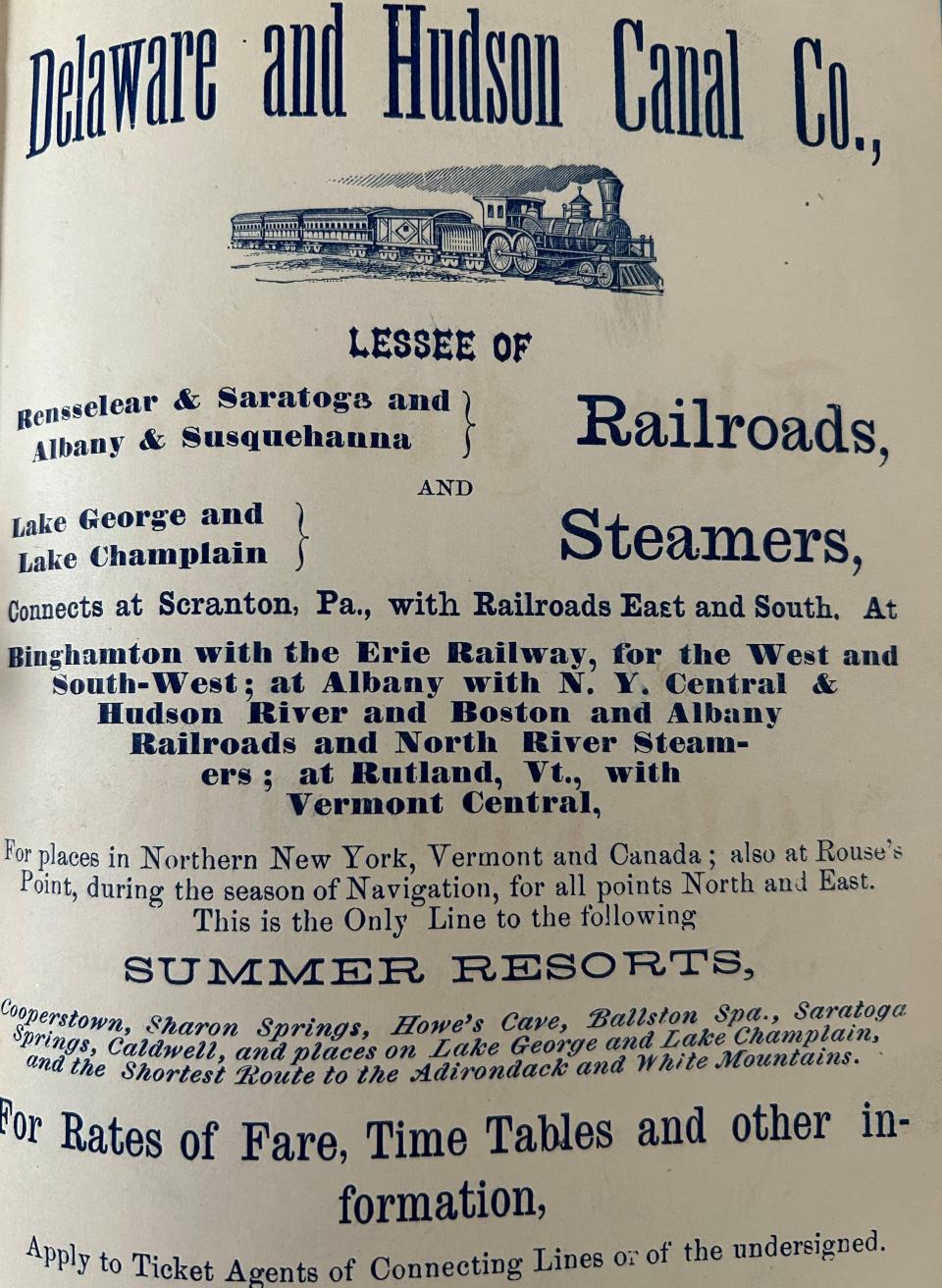
The governor of New York was General John A. Dix, while the lieutenant governor was Binghamton-born John C. Robinson, a Civil War general who rose to great prominence. The mayor of Binghamton was Benjamin Loomis, and the city had only five wards in it compared to the 13 wards in today’s city structure.
There is a prominent full-page ad on page 33 for the Delaware and Hudson Canal Company. If some of you are thinking, "Shouldn’t that ad read Delaware and Hudson Railroad Company?" you would be both right and wrong.
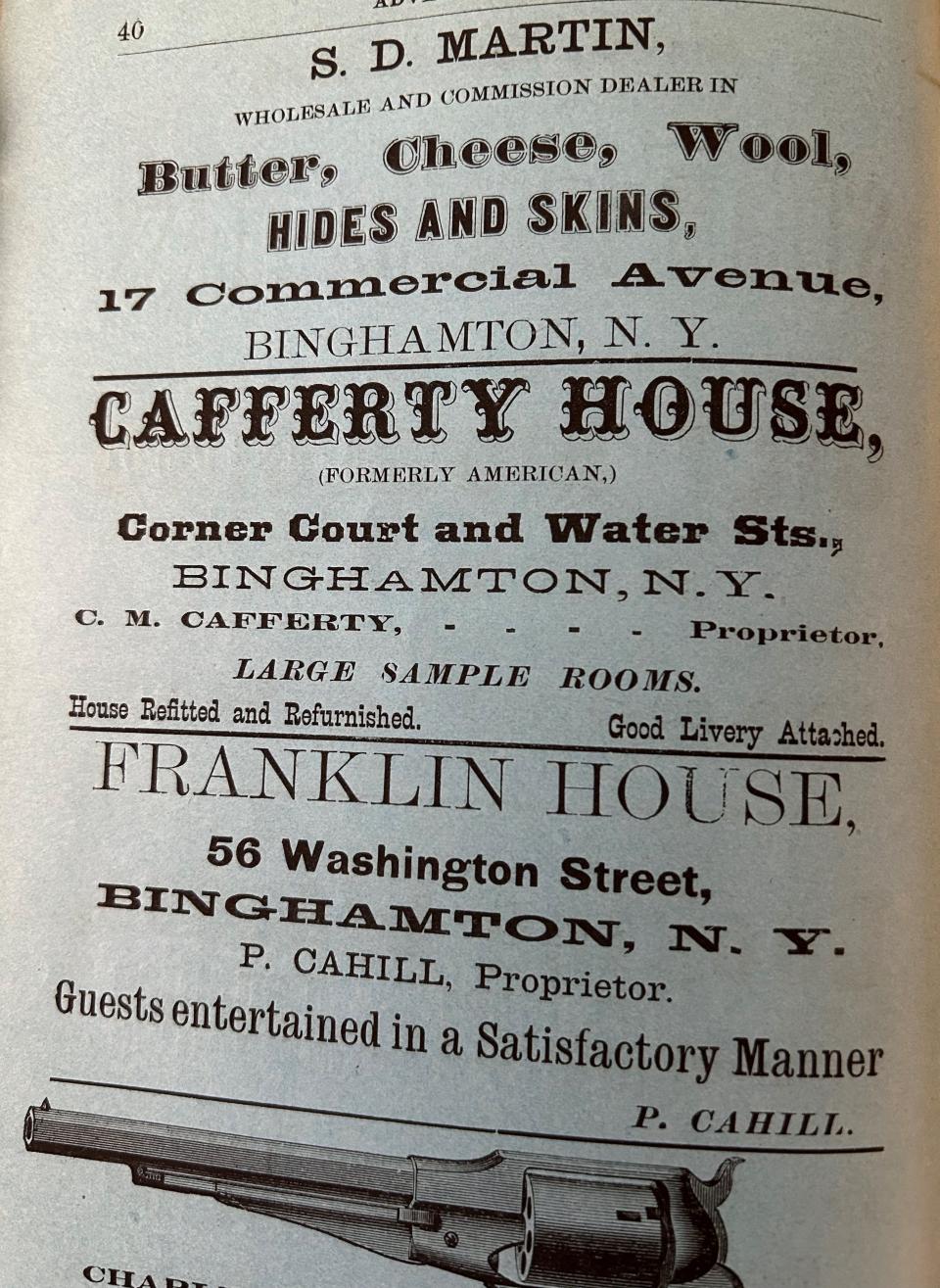
The company started as a canal company and then changed to exclusively railroads later in its existence. Even in 1873, the firm was leasing railroad companies they had absorbed (some by force), including the Albany & Susquehanna Company that ran to Binghamton and was the object of the fight in the tunnel depicted by Edna Ferber in her novel "Saratoga Trunk."
More: A moment to stop. And think about stop signs | Spanning Time
This being a focused directory toward railroad users, many of the ads mentioned places along the routes —including places such as Oneonta, Middleburgh, and Oxford. All of these were stops along the lines of the railroad and they lived off of the increasing travels of the American culture.
The ads mentioned places to stay such as the Cafferty House and the Franklin House in Binghamton.
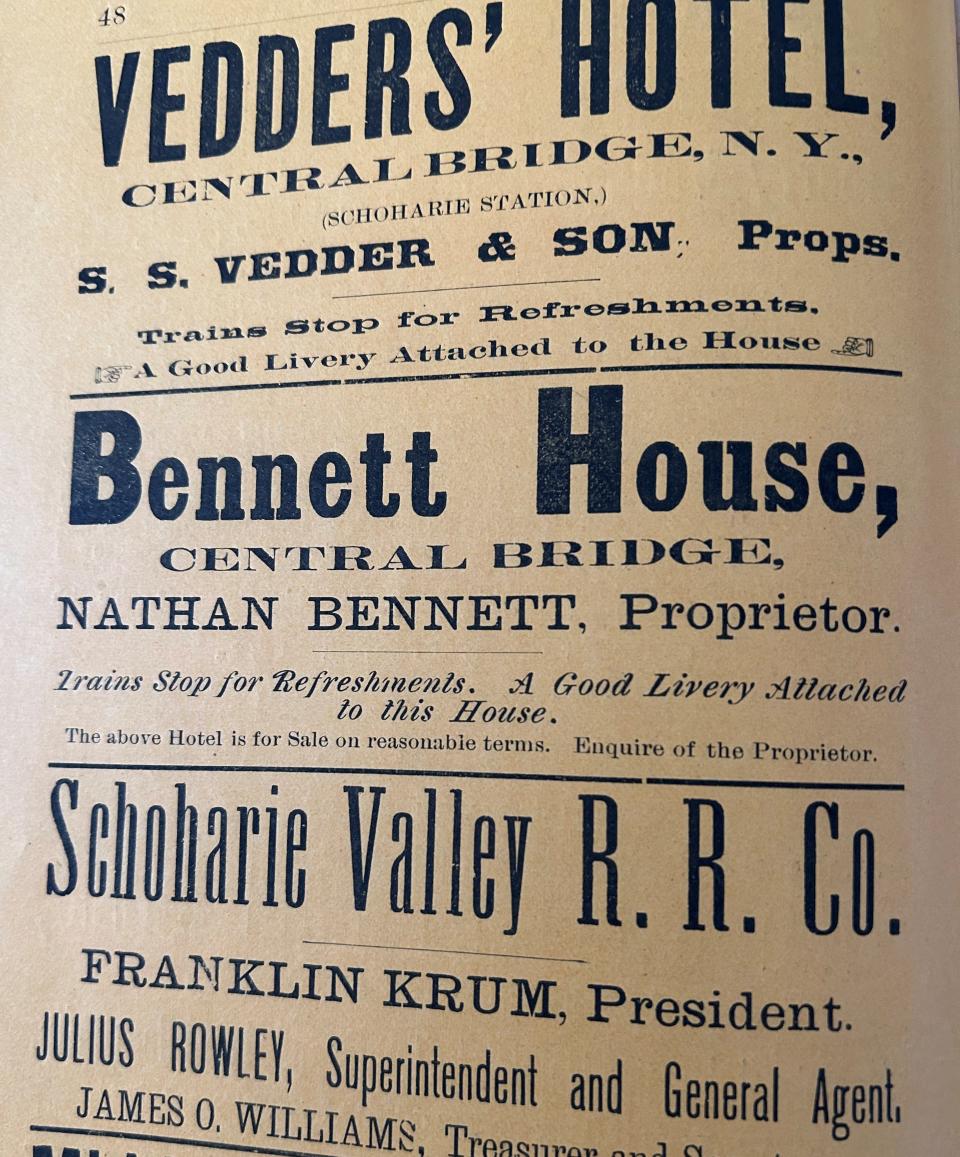
The business pages, usually filled with just local merchants in later directories, included Binghamton-based companies. The listings, though, also included companies relying on sales such as farm implements, stoves, publishers, photographers, and hotels that were scattered along the railroad lines.
Some of the more local dealers in the area such as grocers were more Binghamton focused. There were listings for David Brownson, Connie & Christopher, Marks & Bean, and John Tubbs and many others listed for the readers to find the right grocery store for them. The same could be found for other food items such as fruit dealers, and dry goods stores.
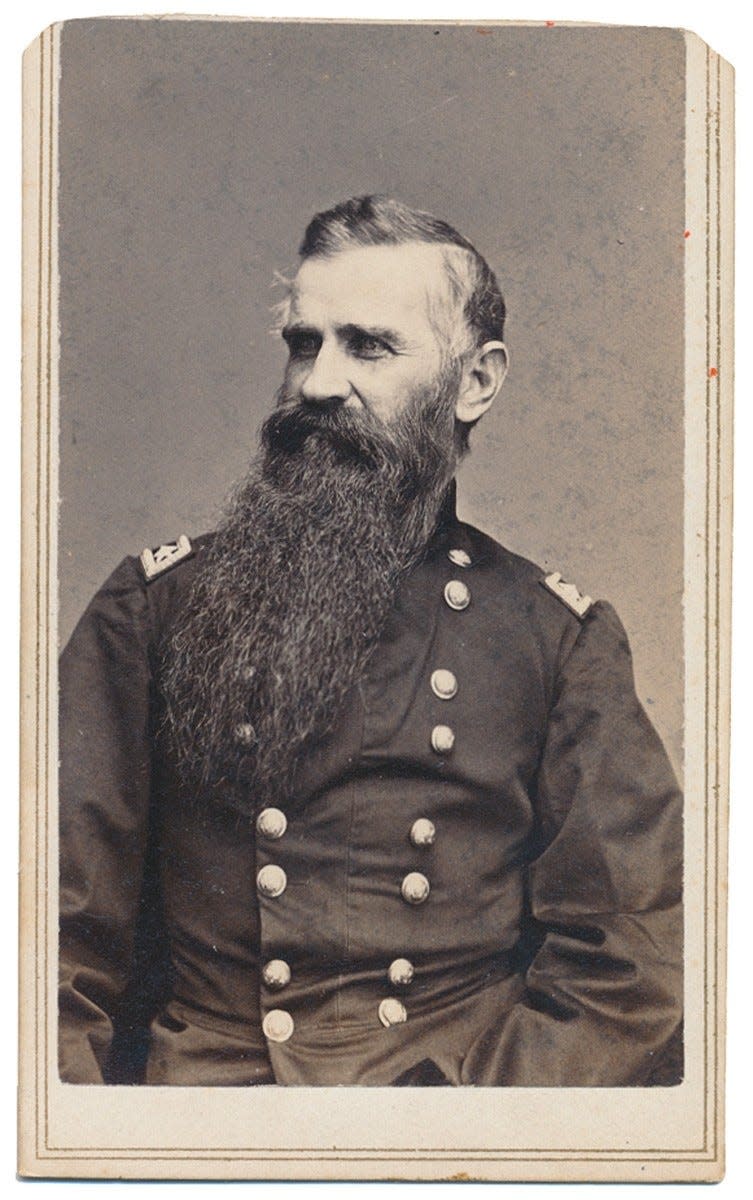
The ads found on the white pages of the directory were often more focused for Binghamton readers, including E. Ayers with his Coffin Ware Rooms with Ready-Made Coffins, Shrouds at 86 Washington St.. The same could be said for insurance agents in companies such as Paige, Chaffee & Co. located in the Phelps’ Bank Building, or the Binghamton Marble Works selling headstones.
It appears that living and dying was a “local” business — area residents would not have gone to Albany to buy a coffin or headstone. Even 150 years ago, the people putting these directories together for local consumption understood their audiences, and tailored these books to find the most suitable reader.
As the years went on and our population increased, the directories became increasingly bent toward solely area businesses. But for now, it is fun to look back 150 years ago.
Gerald Smith is a former Broome County historian. Email him at historysmiths@stny.rr.com.
This article originally appeared on Binghamton Press & Sun-Bulletin: Binghamton history: What we learn from 150-year-old business directory

